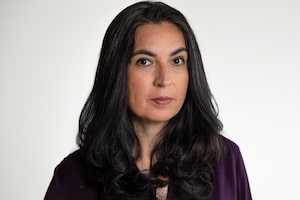In an ideal world, Canada would have a broadcasting system that delivers English, French and Indigenous programming equally.
We don’t live in an ideal world, of course. Only English and French programs have been properly funded, supported and recognized. But it doesn’t mean we can’t build one.
Who controls broadcasting is wildly important because the art we make and the stories we tell – films, television, documentaries, podcasts – hold a mirror up to Canada, and force us to see how we truly live together in this difficult, necessary, national project.
Just as Indigenous peoples continue to fight for basic human rights in the courts and justice system, in child welfare, in health care and, frankly, in all aspects of society, we face a similar battle in the arts. Canada’s federal and provincial governments are the main funders and supporters of Canada’s broadcasting, screen and arts industry. But it might surprise some Canadians to learn that until just last year, there was discriminatory language in the Broadcasting Act that set out that Indigenous culture should be reflected “as resources become available for the purpose.” By doing that, Indigenous content creators, producers and broadcasters were constantly excluded because – you guessed it – those resources never became available.
But a big, under-reported change happened when the Broadcasting Act was amended last year, establishing that Canada’s broadcasting industry must adequately reflect Indigenous peoples and languages, thus raising them up to be a potentially equal pillar of the system. With this recognition, the Canadian Radio-television and Telecommunications Commission now needs to change how it reviews and distributes funding.
These battles for equity have been valiantly fought by the Aboriginal Peoples Television Network, as well as by the Indigenous Screen Office (ISO), a young entity created in 2017 that has been enormously important in incubating the first seeds of ideas that have gone on to bloom into some of Canada’s most recognized work both nationally and internationally. (Full disclosure: I founded and own Makwa Creative, a production company that has also benefited from ISO funds and support for our documentary films.)
At the helm is its CEO, Kerry Swanson, a member of Michipicoten First Nation. “The dream for ISO,” she tells me, “is to have an Indigenous screen sector in Canada that is distinct and well-supported and that our content is recognized across the country and around the world.”
The ISO is realizing this vision. The popular and critically acclaimed TV series Little Bird and Bones of Crows and the feature film Night Raiders – all women-led projects – all formed and grew thanks in part to ISO support. As it happens, even with all the funding they receive, few English-Canadian films or series have made a similarly profound mark in recent years.
Indigenous narrative sovereignty – our ability to tell our stories, our way – can’t be achieved with lip service. It needs allies, financial backers, lawmakers and creative voices, everyone pulling together to achieve meaningful reconciliation.
That is why the Indigenous Screen Office should not be considered just a “program” – meaning that it is constantly forced to beg the government for its existence. Currently, the ISO is funded on a three-year cycle, receiving $13-million a year from the federal Heritage Ministry – but last year, it was left on the brink, uncertain of whether it would get that money. The ISO is the only self-determined, Indigenous-led funding organization for the screen sector in Canada. As such, it embodies the Truth and Reconciliation Commission’s Calls to Action, and should be viewed differently from other bodies. It should be made permanent and given stable funding, to correct historical inequities.
Creating a brand-new agency for this purpose would be no easy task, Ms. Swanson said. The ISO employs an all-Indigenous team across the country, allowing them to reach creators that other typically urban-centric funders do not reach (40 per cent of ISO funding recipients do not live in cities). Ms. Swanson also said they were able to achieve “gender parity right off the gate.”
“I don’t think people realize how exceptionally hard it is to change these structures. The odds are stacked against you when you have to change the system while working in the system,” she said.
The entire Indigenous creative sector is now crossing its collective fingers, waiting to see how the newly amended Broadcasting Act will bolster the ISO, or if it will be neglected like so many of our needed services that have been given “program” status.
Standing behind our storytelling are our lived experiences, our kookums, our aunties and uncles, our sisters and brothers lost in residential schools or Indian hospitals or sanatoriums.
We see Canada differently. And through our eyes, so should you.
 Tanya Talaga
Tanya Talaga